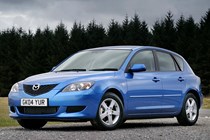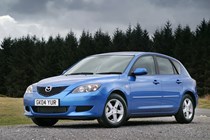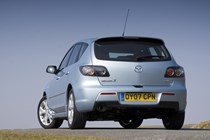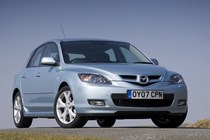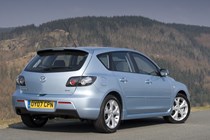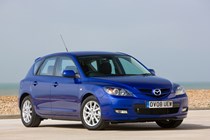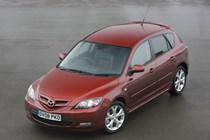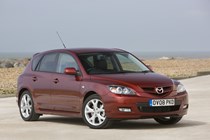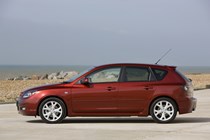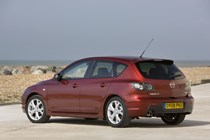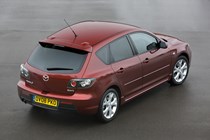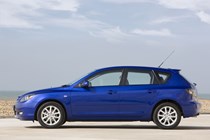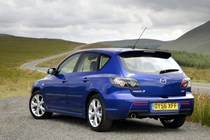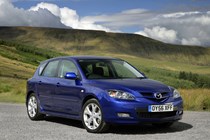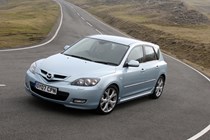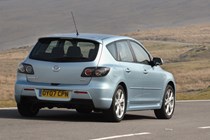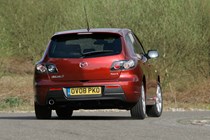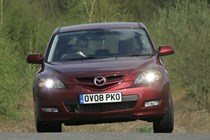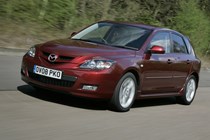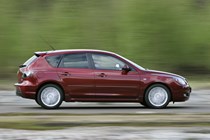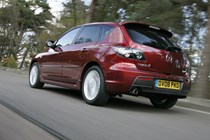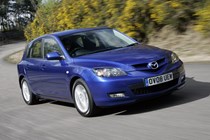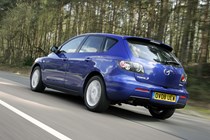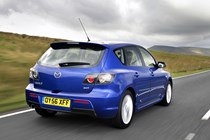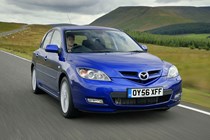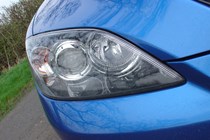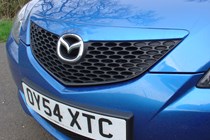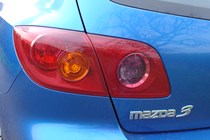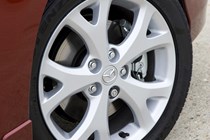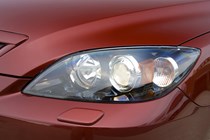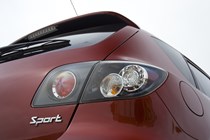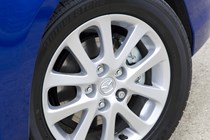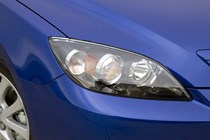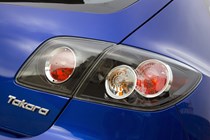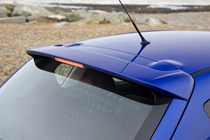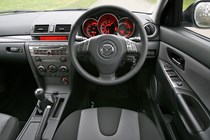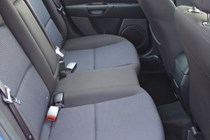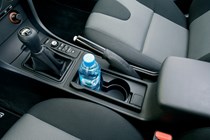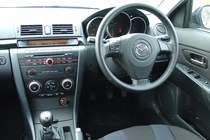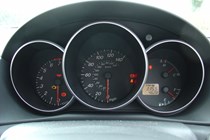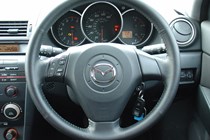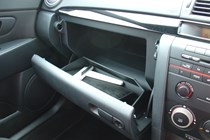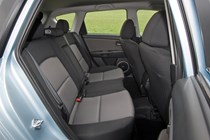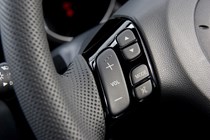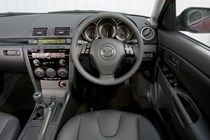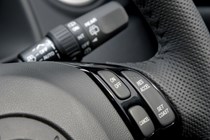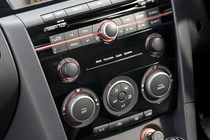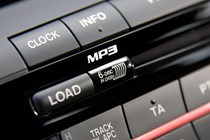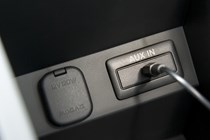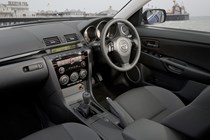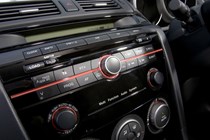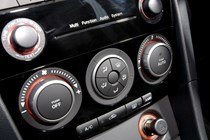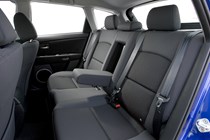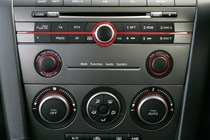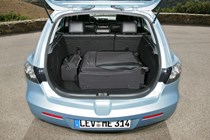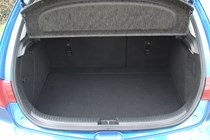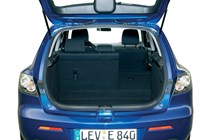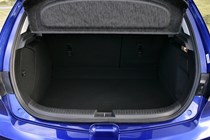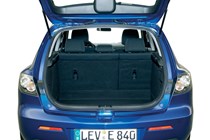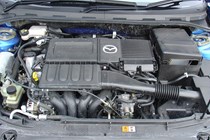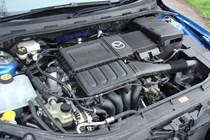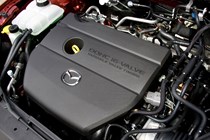
Mazda 3 Hatchback engines, drive and performance
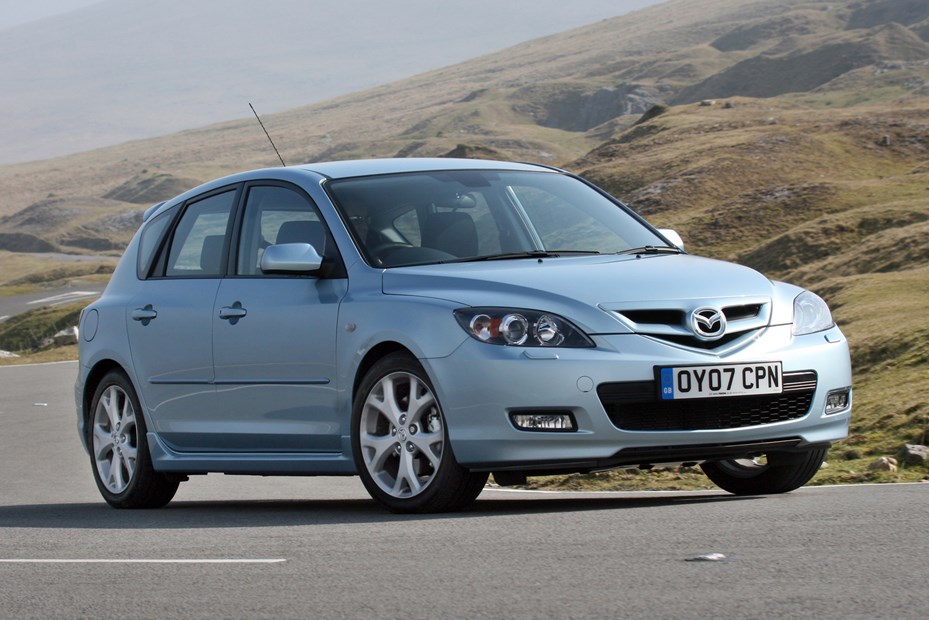
There’s a decent choice of engines in the 3 starting with the entry-level 1.4-litre with a modest 84bhp. Not surprisingly this needs to be worked hard and is only available in entry-level S trim. The 105bhp 1.6-litre is one of the most popular choices and although not particularly quick (0-62mph takes 11.2 seconds) it is refined and fairly economical too while there’s also a larger 2.0-litre engine with 150bhp.
However while the 2.0-litre is sprightly it’s not very frugal – if you want more performance the diesels will suit better. The 1.6-litre diesel comes in two outputs of either 90bhp or 109bhp and both are economical, returning around 60mpg. The higher power version can cover the 0-62mph benchmark in 11.6 seconds but it’s the in-gear pace on offer that makes this model more relaxing to drive than it’s petrol equivalent – especially on the motorway.
A 2.0d (launched in early 2007 with 143bhp) adds real punch to the Mazda3 range. It may not be the most powerful diesel in a car of this size (or the quickest – 0-62mph comes in 9.9 seconds) but it has pulling power where it counts with plenty of mid-range power for effortless overtaking. It’s a convincing hot diesel and one that returns around 47mpg.
The 3 is based on the same platform as the Ford Focus and as a result handles neatly with well weighted steering and good body control. On more demanding roads the Mazda can be surprisingly good fun, with decent grip and predictable handling – it’s certainly safe and composed. Unfortunately the ride isn’t as polished and although good on the motorway the 3 fidgets over bumps and potholes with noticeable vibration through the cabin.
There are two steering systems – the 1.4-litre and 1.6-litre are hydraulically-assisted, while the 2.0-litre and diesel powered models get a more-sensitive electric/hydraulic set up. Cars built after the 2006 facelift benefit from a revised suspension set-up which provides more stability when making direction changes.


